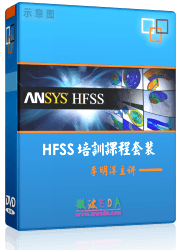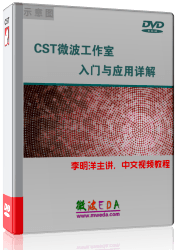Asymptotic Solver Parameters
 Solver
Solver  Start Simulation Start Simulation  Asymptotic Solver Asymptotic Solver
If you are not familiar with what the asymptotic solver does and what
it is used for, you should first read the Solver
Overview or the Asymptotic
Solver Overview. The asymptotic solver allows the calculation of farfield
and RCS results for PEC and surface impedance type structures in vacuum
with open boundaries. Despite its limitations, it may often be the first
choice for electrically very large problems which are difficult to handle
by using any other simulation technique. Before you start the solver you
should have made all necessary solver
settings. After the simulation has finished, the calculated farfield
results can be accessed through the 's
Farfields folder.
Solver settings frame
Solver:
This selection specifies whether the solver should use independent rays
(SBR) or ray tubes (SBR
Raytubes). Scattering independent rays is generally more robust
for complex and inaccurate geometries whereas ray tubes provide a significantly
better performance for electrically large and geometrically smooth structures.
Mode:
This selection specifies whether the solver should run in Monostatic
or Bistatic Scattering mode.
For monostatic calculations, the observation angles are identical to the
excitation angles. Therefore, for this mode the specification of an observation
angle sweep is required only. For bistatic calculations, the excitation
and observation angles do not need to be the same. As a consequence, the
dialog box layout changes depending on the mode and offers an additional
list for specifying excitation angle sweeps when the solver is used in
bistatic mode.
In addition to the two scattering modes, a Field sources mode allows for antenna
placement type of calculations by using field source excitations. For
this mode, only the observation angles need to be specified.
Finally, the Range
profiles mode uses similar observation angle definitions as the
monostatic mode, but only either single point or single angle sweeps are
supported. In case of a single observation point definition, a one dimensional
range profile is calculated whereas for two dimensional sweep definitions,
a sinogram (range vs. angle) will be generated. Please note that the reference
position for the range calculation will always be located in the center
of the global coordinate system (0, 0, 0).
Accuracy:
This setting allows you to choose from one of the predefined accuracy
configurations such as Low, Medium or High.
Low accuracy means that the simulation
settings will be optimized for fast simulations whereas High
accuracy implies settings optimized for obtaining very accurate results.
Typically the Medium accuracy
default provides a good compromise between accuracy and simulation speed.
In addition to these default configurations, you may also choose Custom which enables a Settings
button next to the entry field. This button allows you to enter a dialog
box where you can get more detailed access to the solver control options.
Maximum number of
reflections: This parameter specifies
the maximum number of ray reflections which will be taken into account
for the ray tracing computation.
Store all result
data in cache: Check here if you want the solver results to be
stored in the result
data cache.
Settings: This
button opens a dialog box for more detailed control of the solver's parameters.
This button becomes active only when the Accuracy
field is set to Custom.
Calculate farfields
for PO: This option controls whether the first order PO farfields
are calculated in addition to the total farfields including all multiple
reflection and diffraction effects. Comparing the two sets of results
can be used for checking the influence of the higher order effects on
the solution. This option is only available for the Monostatic
and Bistatic scattering modes.
Incident field polarization settings frame
This frame
is only visible for Monostatic
or Bistatic scattering modes
as well as the Range profiles
mode. The list can contain a number of polarization definitions for describing
the orientation of the incident plane waves' field vectors. Depending
on the particular type of the polarization, each list item may either
be a horizontal, vertical, left hand circular (LHCP), right hand circular
(RHCP) or custom polarization. You can add or delete polarizations from
the list by pressing the Add or
Delete buttons. If a polarization
definition is selected, you may also edit its properties by pressing the
Edit button.
Note: A
change of the Incident field polarization settings also changes the corresponding
settings in the Monostatic
RCS Sweep Properties for the Integral
Equation Solver.
Field source settings frame
This frame is only visible for the Field
sources excitation mode. The list contains an entry for each defined
farfield source. For each source, you may specify an Amplitude
and a Phase shift for the excitation
which will then be applied to the pattern of the farfield source.
In addition a Rays
option can be checked in order to allow storing the rays launched from
the corresponding source for visualization. Depending on the Settings,
the incident rays, the scattered rays and the points where the rays initially
hit the structure are stored (by default, all of these options are active).
The scattered rays for a given excitation will be grouped together by
observation direction, so in addition to checking the ray option for a
particular field source, you will also need to check the ray option for
the corresponding observation angle sweep as well.
Simultaneous
excitation of field sources: Check this option to run a simultaneous
excitation of all field sources. In this case only one farfield result
will be calculated which contains the superposition of all field sources.
If this option is unchecked, a sequence of calculations will be performed
where only one field source is active for each run.
Sweep parameters frame
Frequency sweeps:
This list can contain a number of frequency sweep definitions, each of
which consisting of a lower bound, an upper bound and a step width. By
defining more than one frequency sweep you can specify non-uniform frequency
samplings as needed. You can add or delete frequency sweeps from the list
by pressing the Add or Delete
buttons. If a frequency sweep definition is selected, you may also edit
its properties by pressing the Edit
button. This list is not available for the Range
profiles mode. If the Range profiles
mode is selected, a number of other entry fields is shown instead of the
frequency sweep list:
Center
frequency: This entry field allows you to specify the center frequency
for the range profile and sinogram calculation.
Fmin:
The frequency range for the scattering calculation is automatically derived
from the settings center frequency,
range extend or bandwidth
and number of samples. This non-editable
field displays the currently determined minimum frequency for the calculation.
It is important that this frequency is large enough such that the asymptotic
approximation is valid. The minimum frequency must always be greater than
zero, otherwise you will need to adjust other settings in order to obtain
a valid frequency range.
Range
extend: If this option is selected from the list, it allows to
specify the maximum range extend for the range profile and sinogram calculation.
Checking the Automatic box will
determine a reasonable value for this setting automatically based on the
size of the structure and the center frequency specification.
Bandwidth:
If this option is selected from the list, it allows to specify the bandwidth
for the range profile and sinogram calculation. Checking the Automatic
box will determine a reasonable value for this setting automatically based
on the size of the structure and the center frequency specification.
Number
of samples: This setting allows you to specify the number of spectral
samples for the range profile or sinogram computation.
Window
function: This setting allows you to specify the spectral window
function being used for calculating range profiles or sinograms.
Excitation
angle sweeps: This list can contain a number of angular sweep definitions
for describing the excitation directions from where the structure will
be illuminated by plane waves. Depending on the particular type of the
sweep, each sweep may either be a single point, a one dimensional theta
or phi sweep or a two dimensional theta and phi sweep.
For each angular sweep, a Rays
option can be set in order to allow storing the rays for the corresponding
the plane wave's incident directions. Depending on the Settings,
the incident rays, the scattered rays and the points where the rays initially
hit the structure are stored (by default, all of these options are active).
The scattered rays for a given excitation will be grouped together by
observation direction, so in addition to checking the ray option for a
particular excitation angle sweep, you will also need to check the ray
option for the corresponding observation angle sweep as well.
By defining more than one excitation angle sweep
you can specify non-uniform angular samplings as needed. You can add or
delete angular sweeps from the list by pressing the Add
or Delete buttons. If a angular
sweep definition is selected, you may also edit its properties by pressing
the Edit button. This list only
becomes available for the Bistatic scattering
mode.
Observation
angle sweeps: The list can contain a number of angular sweep definitions
for describing the observation directions for which the scattered farfields
and the RCS results will be calculated. Depending on the particular type
of the sweep, each sweep may either be a single point, a one dimensional
theta or phi sweep or a two dimensional theta and phi sweep. By defining
more than one excitation angle sweep you can specify non-uniform angular
samplings as needed.
A Rays
option can be set for each angular observation angle sweep in order to
store the rays being scattered into these observation directions. The
scattered rays are grouped together by observation direction and excitation,
so in addition to the observation angle selection, in Bistatic
and Field sources modes the ray
option needs to be set for the corresponding excitation as well. In the
Monostatic scattering or Range profiles modes, the corresponding
incident direction will be identical to the observation direction and
therefore specifying the rays option for the observation angle only is
sufficient.
You can add or delete angular sweeps from the
list by pressing the Add or Delete buttons. If a angular sweep definition
is selected, you may also edit its properties by pressing the Edit
button. Please note that in Range profiles
mode only either single point or single angle sweeps are supported.
Note: A
change of the Observation angle sweep settings also changes the corresponding
settings in the Monostatic
RCS Sweep Properties for the Integral
Equation Solver.
Start
Store the specified settings and start the asymptotic
solver.
Optimize...
This button brings you into the Optimize
dialog box that allows you to set up and start an optimization run.
Parameter Sweep...
This button opens the Parameter
Sweep dialog box that allows you to set up and start a sequence of
parameterized simulations. Note that it is necessary for the model to
contain parameterized structure elements or solver settings.
Acceleration...
Opens the acceleration
dialog box to control the high performance options of the simulation
run (e.g. Multithreading, Distributed Computing).
Apply
Store the specified settings without starting the
calculation.
Close
Closes this dialog box without performing any further
action.
Help
Shows this help text.
See also
Solver
Overview, Asymptotic
Solver Overview, Asymptotic
Solver Settings, Asymptotic
Solver Specials (SBR), Asymptotic
Solver Specials (SBR Raytubes), Asymptotic
Solver Frequency Sweep, Asymptotic
Solver Angle Sweep, Asymptotic
Solver Polarization, Optimize
Parameters, Parameter
Sweep, Distributed
Computing Overview, Monostatic
RCS Sweep Properties, Integral
Equation Solver.




HFSS视频教程
ADS视频教程
CST视频教程
Ansoft Designer 中文教程
|